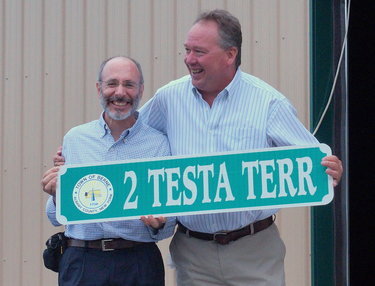Self Help kept the wheels of government turning
To the Editor:
Your editorial this week [“Visionaries, muddy boots, and a century of global good"] about the potential sale of the Carey Institute for Global Good got me thinking about my great friend and co-worker, Fred Testa.
Fred was working for the New York State Department of Environmental Conservation in a program called Construction Grants, which worked with New York communities planning, designing, and building wastewater treatment facilities. When Ms. Diane Perley, the supervisor of the new Self Help unit just being formed, approached Fred, Fred jumped at the chance and became one of the first to apply these new approaches to small communities.
These were the communities struggling to understand the federal and state requirements, to navigate the funding and affordability minefields, and bring their projects to fruition. For many, their capital projects might have been the largest undertaking in their history, and Fred, and others like him, did a heck of a lot of hand-holding, and attended late night meetings, often patiently explaining and answering questions from citizens and local officials. They also kept the wheels of government turning.
Fred ultimately became the supervisor of the program, and is now retired. Why did I single out Fred Testa? Partly to flesh out your coverage of the Rensselaerville Institute and also to illustrate how the Self Help program impacted a small community in our backyard.
The town of Berne had been in a seemingly endless and unproductive round of planning for a sewer system in the Berne hamlet. When the Department of Environmental Conservation and the township entered an order on consent due to pollution in the storm sewers, Fred began working with town officials. A bit of time later (years actually ), and after a focused campaign of lining up funding and approval of construction plans, the system was built and dedicated!
I can’t over emphasize how Fred was an essential element in the process. I knew that he was putting off retirement until this was finished. Yes, there were several other people who contributed mightily. But the Self Help program added the extra staff to concentrate on that small number of communities that had a spark, or a spark plug, and just needed a bit of encouragement.
Berne named the driveway into the facility “Testa Terrace.” A suitable thank you I think …
Fred and I were catching up the other day, and reminiscing about [Institute] President Hal Williams, and that Jane Schantz at the Institute wrote the Self Help Handbook. I think that ultimately there was a partnership with the state’s departments of environmental conservation, of state, and of health. Currently, the program resides at the state’s Environmental Facilities Corporation. Hopefully, the work continues!
Thanks for this article [“Carey Institute listing its campus for sale, hopes to continue work"] and opinion piece that reminded us of how it happened and how important it was.
Gerry Chartier
Berne
Editor’s note: Gerry Chartier chaired the Berne Planning Board at the time the town’s wastewater facility was built. He also served on a sewer committee with then-Supervisor Kevin Crosier, then-Councilman Peter Vance, planning board member Michael Vincent, and Lamont Engineers project manager Milan Jackson.
